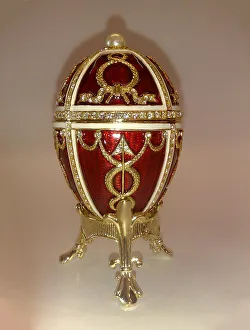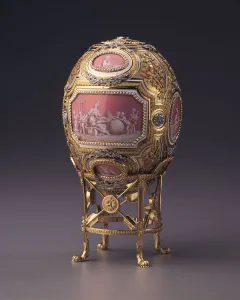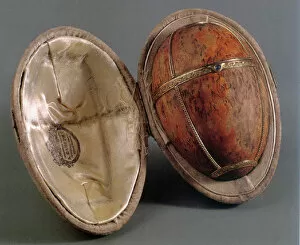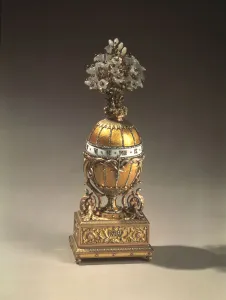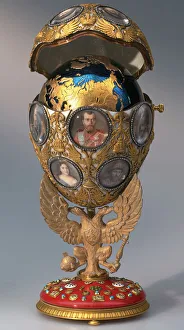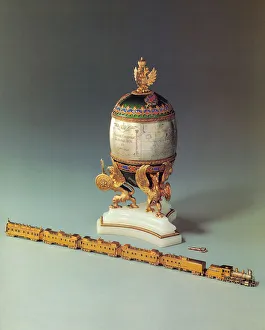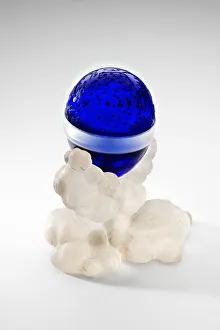Faberge Egg Collection
The Faberge Egg Collection is a mesmerizing display of exquisite craftsmanship and opulence
All Professionally Made to Order for Quick Shipping
The Faberge Egg Collection is a mesmerizing display of exquisite craftsmanship and opulence. Each egg tells its own unique story, showcasing the incredible talent of the artists involved. One such masterpiece is the Lapis Lazuli Easter Egg from the late 1800s to early 1900s. Crafted with gold, enamel, lapis lazuli, and pearls, this egg radiates elegance and sophistication. Another remarkable creation is the Jade Egg with Stand, created after 1900. Made from jade mounted in gold and adorned with cabochon rubies, jade, and purpurine, it exudes a sense of grandeur. An earlier piece that captivates collectors' hearts is an Egg from before 1896. This golden beauty features intricate enamel work alongside sapphire accents on its easel and stand. A rare jeweled two-color egg bonbonniere dating between 1896-1908 showcases exceptional guilloche enamel work on silver-gilt and gold materials. The Imperial Caucasus Egg holds historical significance as it was crafted in 1893 for Tsar Nicholas II's mother-in-law Empress Maria Feodorovna. Its design incorporates a pine tree embraced by wisteria blossoms—a symbol of eternal love. For those enchanted by dance culture during that era will appreciate Carnet de bal (Dance card) made between 1908-1914. It was designed by Henrik Immanuel Wigstrom at Faberge manufacture during their active years in the early twentieth century. Easter egg Moscow Kremlin produced between 1904-1906 showcases Russian Master's artistry combined with Factory Faberge's expertise to create an enchanting masterpiece fit for royalty. The Rosebud egg crafted in 1895 by Michail Yevlampievich Perkhin embodies delicate beauty through its intricate detailing and masterful use of materials like gold at Faberge manufacture under his guidance until 1903.










